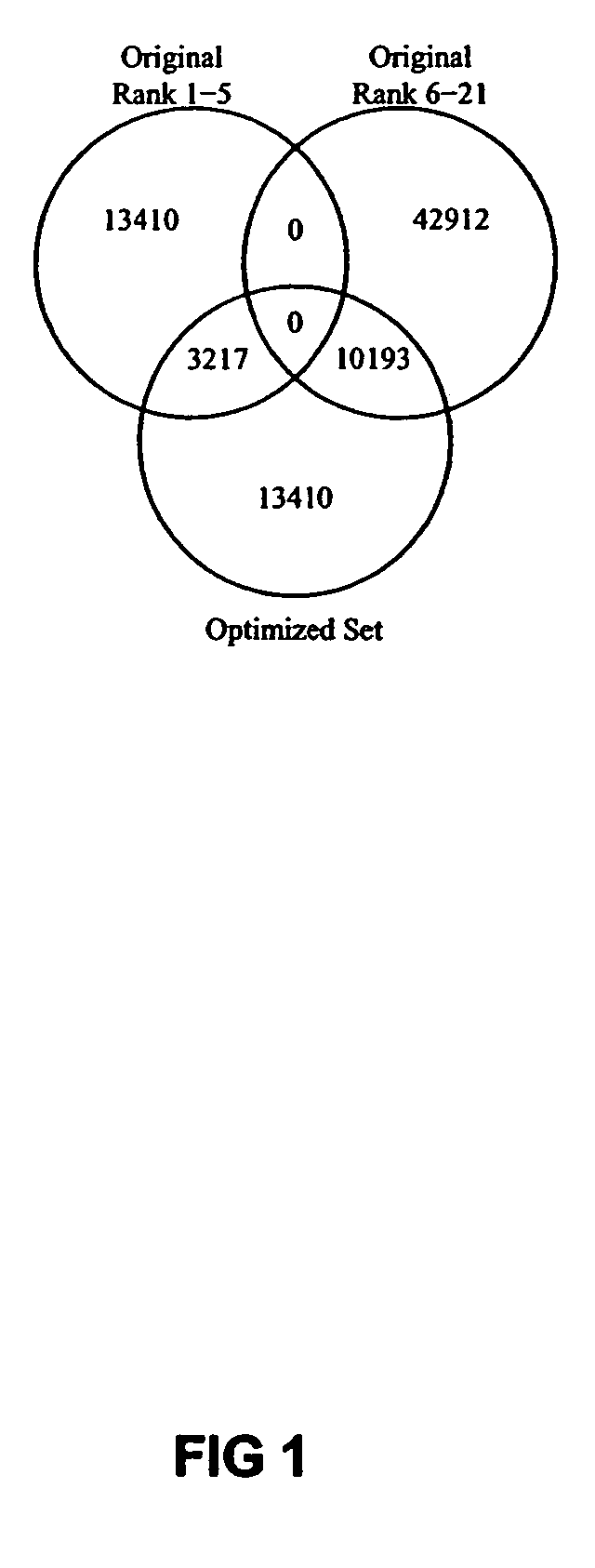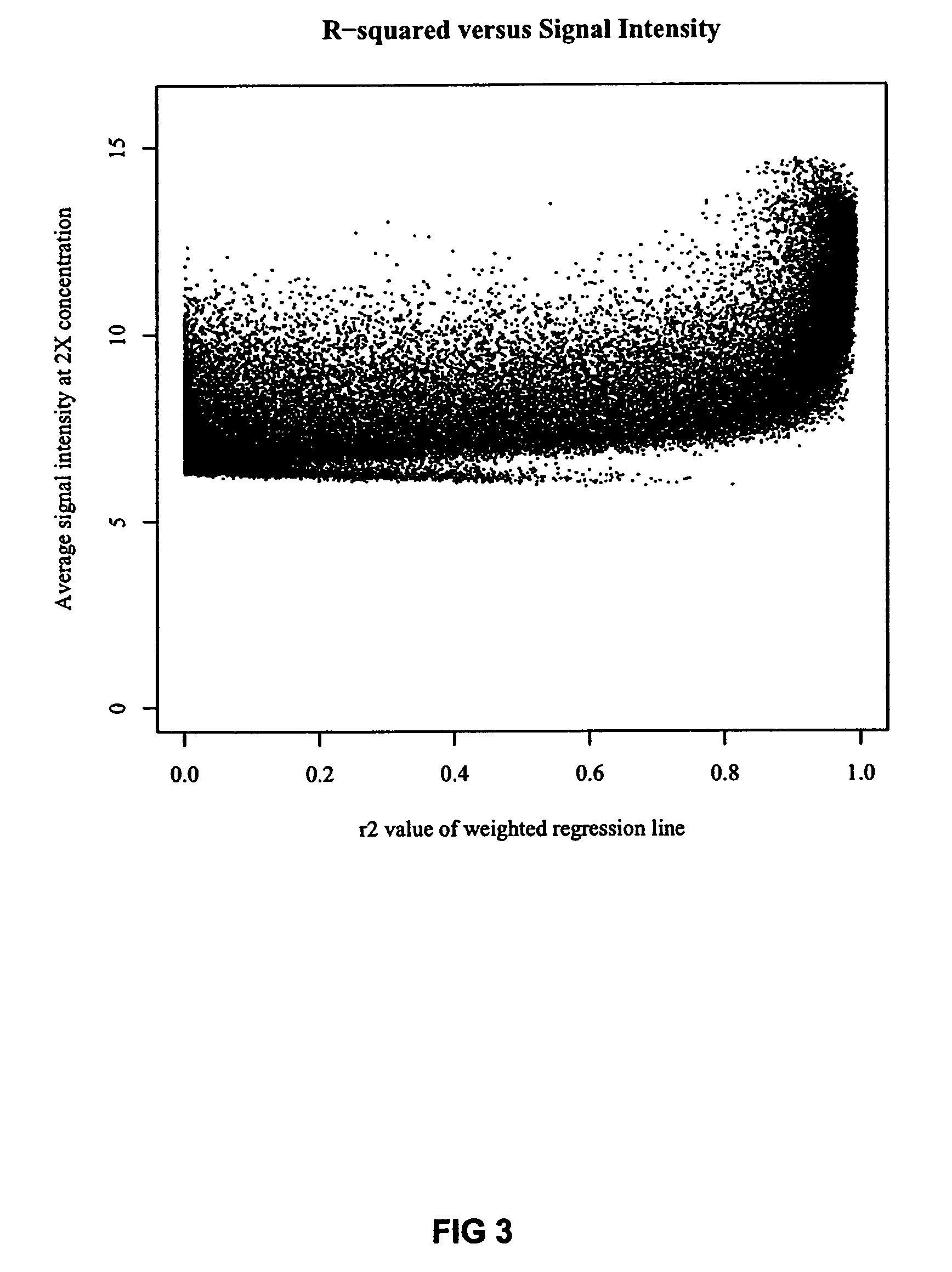Optimized probe selection method
a probe selection and probe technology, applied in the field of dna microarray technology, can solve the problems that the selection of dna fragments within chromosomes can be difficult or impossible to detect by these methods, and achieve the effect of improving the initial in silico rank selection
- Summary
- Abstract
- Description
- Claims
- Application Information
AI Technical Summary
Benefits of technology
Problems solved by technology
Method used
Image
Examples
example
[0030]In a preferred embodiment of the invention, the goal was to start with an initial set of twenty-one 24-mer probes for each of the 2682 genes in Lactococcus lactis subsp. cremoris SK11, and after performing the novel probe optimization method described herein to select the top 5 probes for each gene placed in a single 13000 feature well of NIMBLESCREEN™ 12plex format microarray (available through NimbleGen Systems, Inc.).
Experimental Design
[0031]Lactococcus lactis Subsp. cremoris SK11 Probes
[0032]In designing the experiment, standard NIMBLEGEN™ rank selection was used to select twenty-one 24-mer probes from each of 2682 sequences in Lactococcus lactis subsp. cremoris SK11 probes for use as the initial probe set. The standard rank selection is an interactive, score based process that is used to select hybridization probes based on 4 parameters. The initial score is calculated using the following four parameters.
[0033]Weighted uniqueness*100. By the term “weighted uniqueness” it ...
PUM
| Property | Measurement | Unit |
|---|---|---|
| pH | aaaaa | aaaaa |
| voltages | aaaaa | aaaaa |
| brightness | aaaaa | aaaaa |
Abstract
Description
Claims
Application Information
 Login to View More
Login to View More - R&D
- Intellectual Property
- Life Sciences
- Materials
- Tech Scout
- Unparalleled Data Quality
- Higher Quality Content
- 60% Fewer Hallucinations
Browse by: Latest US Patents, China's latest patents, Technical Efficacy Thesaurus, Application Domain, Technology Topic, Popular Technical Reports.
© 2025 PatSnap. All rights reserved.Legal|Privacy policy|Modern Slavery Act Transparency Statement|Sitemap|About US| Contact US: help@patsnap.com



